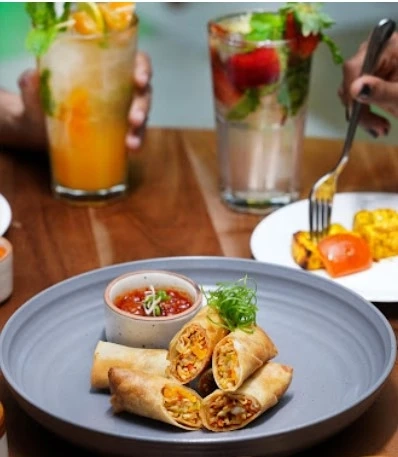Spring rolls are a beloved dish enjoyed across various Asian cuisines, celebrated for their crispy exterior and flavorful fillings. Whether you're a fan of Vietnamese, Thai, Chinese, or Filipino cuisine, spring rolls offer a versatile and delicious way to enjoy fresh ingredients wrapped in a delicate, crunchy shell.
Origins and Varieties:
Spring rolls trace their origins to China, where they were initially served during the Spring Festival, hence their name. Over time, they spread throughout Asia, each region adding its unique twist to the recipe.
Vietnamese Spring Rolls (Gỏi Cuốn): These are typically made with shrimp, pork, vermicelli noodles, fresh herbs like mint and cilantro, and lettuce, all wrapped in rice paper. They are often served with a peanut dipping sauce or nuoc cham.
Chinese Spring Rolls: These are usually fried and filled with a mixture of minced pork or shrimp, cabbage, carrots, and sometimes mushrooms, seasoned with soy sauce and other spices. They are crispy on the outside and savory on the inside.
Thai Spring Rolls: Known as Por Pia Tod, Thai spring rolls are similar to Chinese spring rolls but may feature ingredients like glass noodles, bean sprouts, and Thai basil. They are typically served with a sweet chili dipping sauce.
Filipino Lumpiang Shanghai: These spring rolls are smaller in size, filled with ground pork seasoned with garlic, onions, and soy sauce. They are deep-fried until golden brown and crispy, often served with a sweet and sour dipping sauce.
Making Spring Rolls:
While recipes vary, the basic process of making spring rolls involves preparing the filling, wrapping it tightly in spring roll wrappers (either rice paper or wheat-based), and either frying or serving them fresh. Here's a general guide:
Prepare the Filling: Chop and prepare your ingredients. Common fillings include protein (like shrimp, pork, chicken), vegetables (carrots, cabbage, bean sprouts), noodles (vermicelli or glass noodles), and herbs (mint, cilantro, Thai basil).
Wrap the Spring Rolls: Dip a spring roll wrapper briefly in water to soften it, then lay it flat. Add a small amount of filling in the center, fold the sides over, and roll tightly, sealing the edges with a bit of water or egg wash.
Cooking Options:
Frying: Heat oil in a pan and fry until golden brown and crispy.Baking: Brush the rolls with oil and bake in the oven until crisp.Fresh: Serve immediately after wrapping, especially with rice paper rolls.Serving and Pairing:
Spring rolls are often served as appetizers or as part of a meal with dipping sauces such as sweet chili sauce, peanut sauce, or nuoc cham (a Vietnamese dipping sauce). They pair well with jasmine rice, stir-fried dishes, or enjoyed on their own as a light and satisfying snack.
Conclusion:
Whether you prefer them fresh or fried, filled with meat or veggies, spring rolls offer a delightful culinary experience that can be adapted to suit various tastes and dietary preferences. Experiment with different fillings and sauces to create your own signature spring roll recipe and enjoy this classic Asian dish with friends and family.



